After a good day of practice and showing off the sights and sounds of some classic race cars during Day 1 of the Monterey Motorsports Reunion at Laguna Seca, Day 2 is when the more serious drivers come to play. While still termed as a practice day, there were some drivers out there giving it some stick to prepare for qualifying for those that signed up not just to drive around the track, but to actually take part in some historic racing!
Much like the first day, there were some legendary, rare, and exceptional classic race cars climbing over the twisting course before plummeting the nearly 90 feet down the corkscrew corner before entering Rainey Curve. And like with the first day, we’re going to highlight some of the rarest, special, and/or just great cars that took to the track on August 13th! If you missed the live steam, you can watch it in its entirety here: Monterey Motorsports Reunion Day 2.
1966 Bizzarrini 5300GT Strada Corsa

Here’s a car that you’ve probably never heard of. Bizzarrini, as a company, was around for only five short years, as a passion project of former Ferrari and Alfa Romeo engineer Giotto Bizzarrini. He was able to design and build three models in the short time the company had before it folded, but what cars they were. There was the 1900 GT Europa, a classic berlinetta grand tourer reminiscent of the Ferrari 250 GT in style, not so much in power. There was the P538S, a race car that put a Corvette 327 small-block V8 dialed up to 450 HP into a lightweight tubular steel chassis with a fiberglass shell and went like it had been poked in the rear with a very sharp stick.
And then there was the 5300GT Strada and its much rarer 5300GT Strada Corsa racing variant. It was also the first car to be made by the Bizzarrini SpA motor company, and much like the P538S, it used a Chevrolet Corvette 327 small block as its powerplant. In a bit of a twist away from the mid-engine layout that was becoming the standard for supercars and racing GT’s of the time, the engine was mounted front-midships. This was possible because of the small-block 327, with the last two cylinders of the eight just starting to hang over the front axle. What this did, however, was place the bulk of the weight directly over the pivot center of the car.
Possibly without meaning to, Giotto Bizzarrini put a lump of American iron in the single best place to have it in a front-engined car, dialed the power up to over 400 HP in the Corsa, and let it loose on the track. Despite having more than a few reliability problems, what it did successfully do was win the hearts of those that drove it. It cornered beautifully, it emitted a deep, primal growl from its American powerplant, and it sliced through the air because it was only 44.1 inches from the bottom of the tires to the top of the cockpit. It didn’t win any Le Mans races, it never actually survived any endurance race any privateers entered with the car, but it still shows that can happen when Italians design and American power combine to produce a car that literally defines the words “passion project.”
1960 Lola Mk I

It’s extremely rare for the first version of a racing car to make an appearance at a track, let alone at a Concours d’Elegance. Yet, in the 2021 Monterey Motorsports Reunion, not one but two 1960 Lola Mk I’s were entered. So what makes this car so special that it deserves to be highlighted?
For those that grew up in the 60s, 70s, and 80s, Lola was a name that was attached to pretty much every aspect of open-wheel racing. In fact, Mario Andretti won the 1983 Indianapolis 500 driving a Lola owned by the new Newman/Haas team. Arie Luyendyk won the 1990 version of the Indy 500 in a Lola as well. As well, Lola helped develop the Mitsubishi WRC Lancer, the car that helped launch the legendary Lancer Evolution series of AWD rally cars for the road. They dabbled in CanAm racing with the T600, which also competed as an IMSA GT-Prototype. They tried their hand at Formula 1. Basically, Lola Cars was a legendary name that often, in any series outside of Formula 1, meant you were getting the best of the best.
However, in 1960, two years after founder Eric Broadley had opened his new racing car company in the United Kingdom, he had to make a choice. He was two years in, in debt, on the verge of bankruptcy, and needed to produce something that would both sell well, and win races. He took the bold step of selling all his possessions and investing everything in a do-or-die sports car. The result was the Lola Mk I.
This is, literally, genesis for the storied history of Lola Cars. It is akin to a band writing a hit song in the back of the tour van between venues, and in its first performance, the Lola Mk I proved to be a winner. The tiny little GT car, measuring just 132 inches from bumper to bumper, powered by a 1.0L Coventry Climax Mk II inline-four that produced barely 83 HP, won the GT lightweight class at the 12 Hours of Sebring. This is the David that won out against the Goliaths of major companies like Ferrari and Porsche.
The reason for this is that the car was, as was necessitated by the need to get a car out and racing, extremely simple. Fiberglass over a steel spaceframe. A proven, reliable, if tiny, engine that was so small it could be lifted out of the car by two strong mechanics if needed. Independent double-wishbone suspension up front, bog-standard half-shafts with transverse links in the rear. If something broke, you could either smack it with a hammer to make it work again or replace the part quickly and easily. And because it weighed about as much as a wet feather, the 83 HP on tap was more than enough to get the car not only moving, but even power sliding around corners in four-wheel drifts. This is a car you literally grabbed by the scruff of the neck, pointed it where you wanted it to go, and it went there.
If it had failed, the face of CART, Indycar, CanAm, IMSA, International GT, and even Le Mans would look much different. Forty of these little GT superstars were made, and those forty cars paved the way for over 50 years of racing excellence.
1970 Ford Mustang Boss 302 Trans-Am

Are there any sounds more awesome, more earthshaking, than a group of V8’s roaring past you in anger? We think not! The SCCA Trans-American Racing Championship, often shortened to “Trans-Am,” was a series started in 1966 to showcase that American cars weren’t always about drag racing and laying down two long black snakes of rubber when leaving a stoplight. The whole idea of the series was similar to what started up the British Touring Car Championship around the same time: watch it race on Sunday, buy it from the dealer on Monday. While there were many cars in competition from Alfa Romeo’s with bored out engines to four-speed Camaro Z28’s, there was only one Boss at the track.
The 1970 Ford Mustang Boss 302 Trans-Am was literally the king of the golden years of Trans-Am, which fans consider to be 1968 to 1973. It was a classic Ford Mustang fastback, with a front air dam under the front, a small spoiler on the back, and a gigantic 4.9L, or 302 cubic inch V8 under the hood. It was also a pretty special engine, with the small block of a Ford 302 Windsor V8, but cast with thinner walls to make it lighter. It was mated to a Cleveland 351 cylinder head, which was fed from a Holley 780 manual choke carburetor. It featured solid lifters inside the engine, producing a unique tone to the roar of its engine.
In race trim with racing fuel, the engine produced near-as-makes-no-difference 300 HP, and 290 lb-ft of torque through a four-speed manual. A factory-entered Boss 302 Trans-Am won the outright series title in 1970, driven by Parnelli Jones of NASCAR fame. It should also be pointed out that the factory team was lead by Bud Moore, another NASCAR hall of fame inductee that got his start in big engine US of A racing in the Trans-Am years. While not the most elegant of cars, without the shapes of an Italian designer, the raw sensibility of a German designer, and not even the matter-of-fact design of a British designer, the Ford Mustang Boss 302 Trans-Am was one thing, and one thing only: A sledgehammer for the track.
1939 Lagonda V12 “The Beast”

I must admit that this is a bit of a personal one for me. When the 1920 to 1951 Racing Cars class went out on the track, I was positively transfixed by the Bugatti Type 35, the Maserati 4CM, and other classics of endurance that had won races such as Le Mans, the Mille Miglia, and the like. And then this hulking, black-painted monster of a car rumbled out of the pit lane, dwarfing every other car around it. It made me break out in a grin because it was one of the two modified 1939 Lagonda V12 Coupes that came in third and fourth at the 1939 24 Hours of Le Mans.
If you look at the picture above, you can see why the car earned its nickname of “The Beast.” That is a 1928 Bugatti 37A Supercharger at the top of the picture, itself not a small car, and then there is the gigantic Lagonda just sailing past it like an ocean liner passing a sailing yacht on the open seas. It does help, however, that even with a supercharger, the Bugatti is only a 1.5L inline-four producing 90 HP, and the Lagonda has a mighty 4.5L V12 thundering out almost 200 HP, which happened to be designed by one W.O. Bentley. You might have heard of his cars. However, to get that power, they did have to do a lot of work to the car.
The standard Lagonda V12 Coupe was one of those cars that only the wealthy bought, as it was fully coachbuilt to meet each client’s exact requirements. It featured two SU carburetors to feed its hungry engine, and the pride of the car was that it had enough power to cruise comfortably on the long-distance tours that the wealthy of the day partook in. And then the Lagonda company decided they wanted to race at Le Mans. The two SU carburetors were removed, replaced with four high-flow carburetors. The body was pared down, made of aluminum instead of steel, streamline, and the comfortable raised seats were removed for a seat that was quite literally bolted to the floor of the car. The cylinders were polished, and higher endurance O-rings were put in place around the pistons.
Consider that the standard road-going, coachbuilt Lagonda V12 Coupe was able to reach over 100 MPH as a comfortable grand tourer, and then consider that half of the weight of the road-going version was literally tossed aside. The Beast is a big car, for sure, but when you put your foot down in it, it goes. And, if you watch the live stream link at the top of the article and go to 6 hours and 36 minutes in, it sounds like a fighter aircraft as it powers down the front straight at Laguna Seca. A lovely, weird, plain silly example of a car that had no place being a race car, but succeeds at it nonetheless!


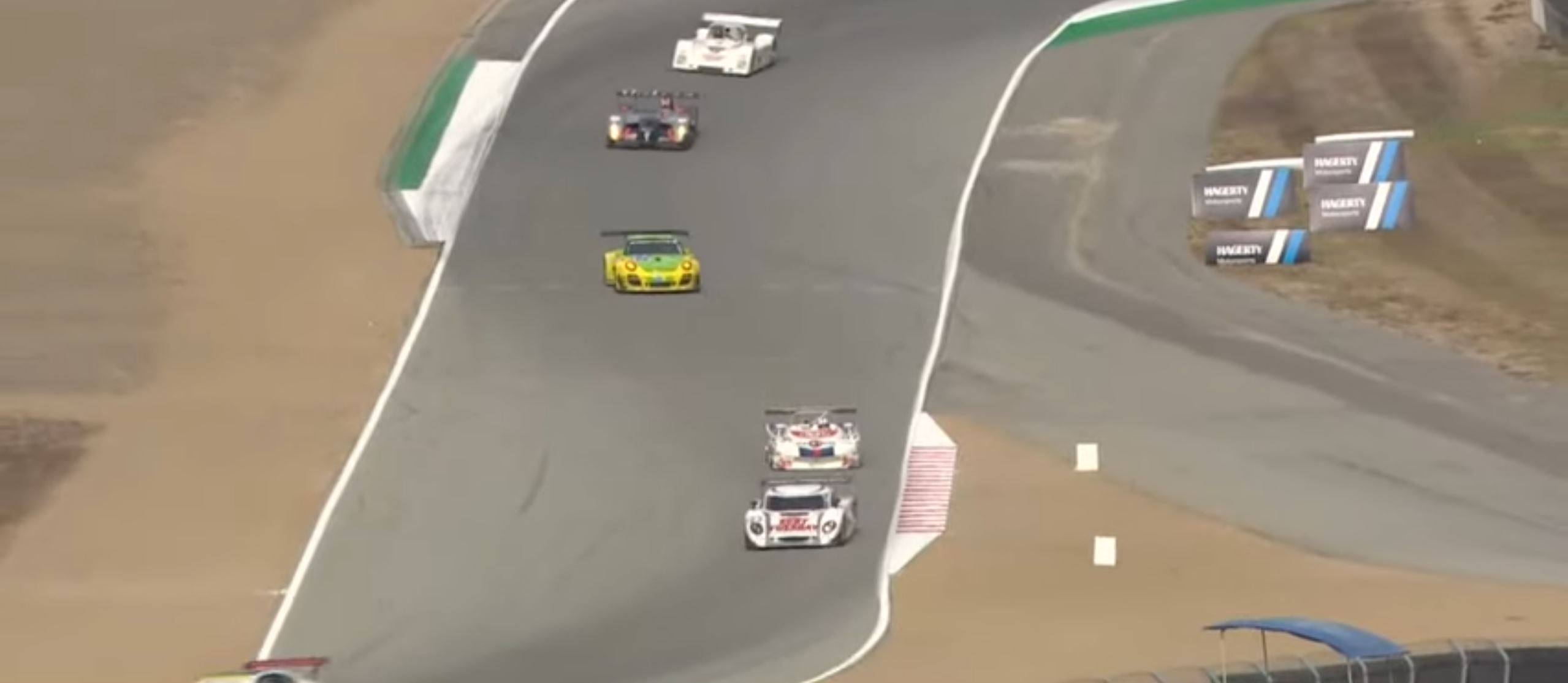

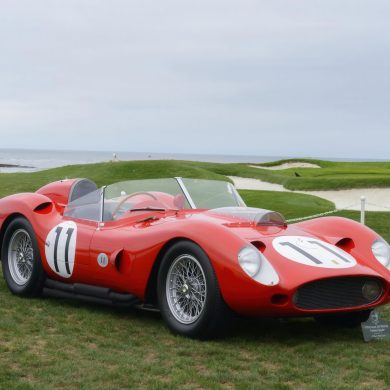

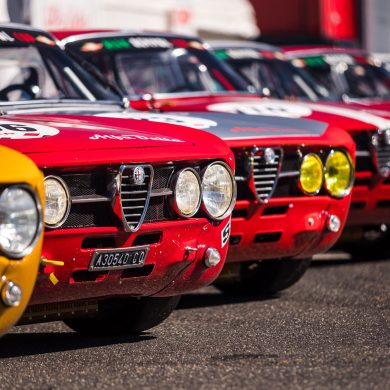
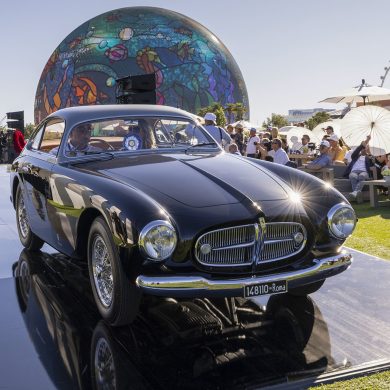
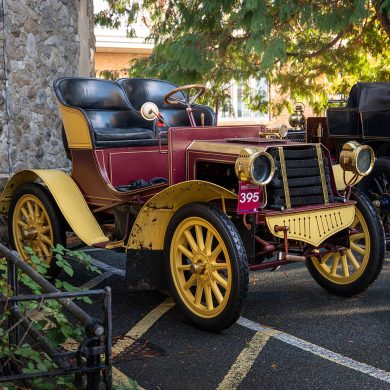


“Parnelli Jones of NASCAR fame” Really? I don’t know who I am more disappointed in – the writer or the editors. While Rufus (look that up) won in everything he drove his legend is firmly entrenched in cars without fenders.